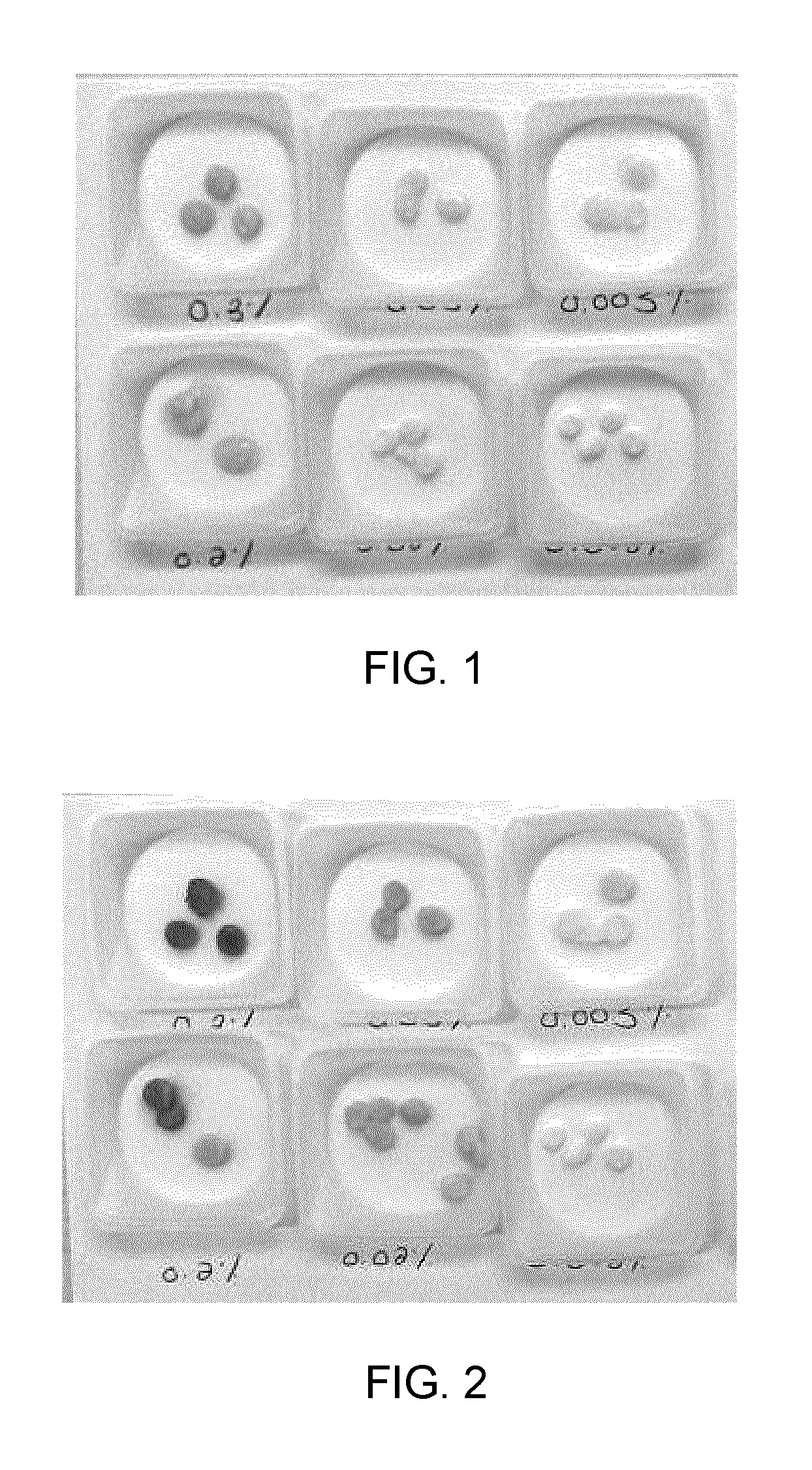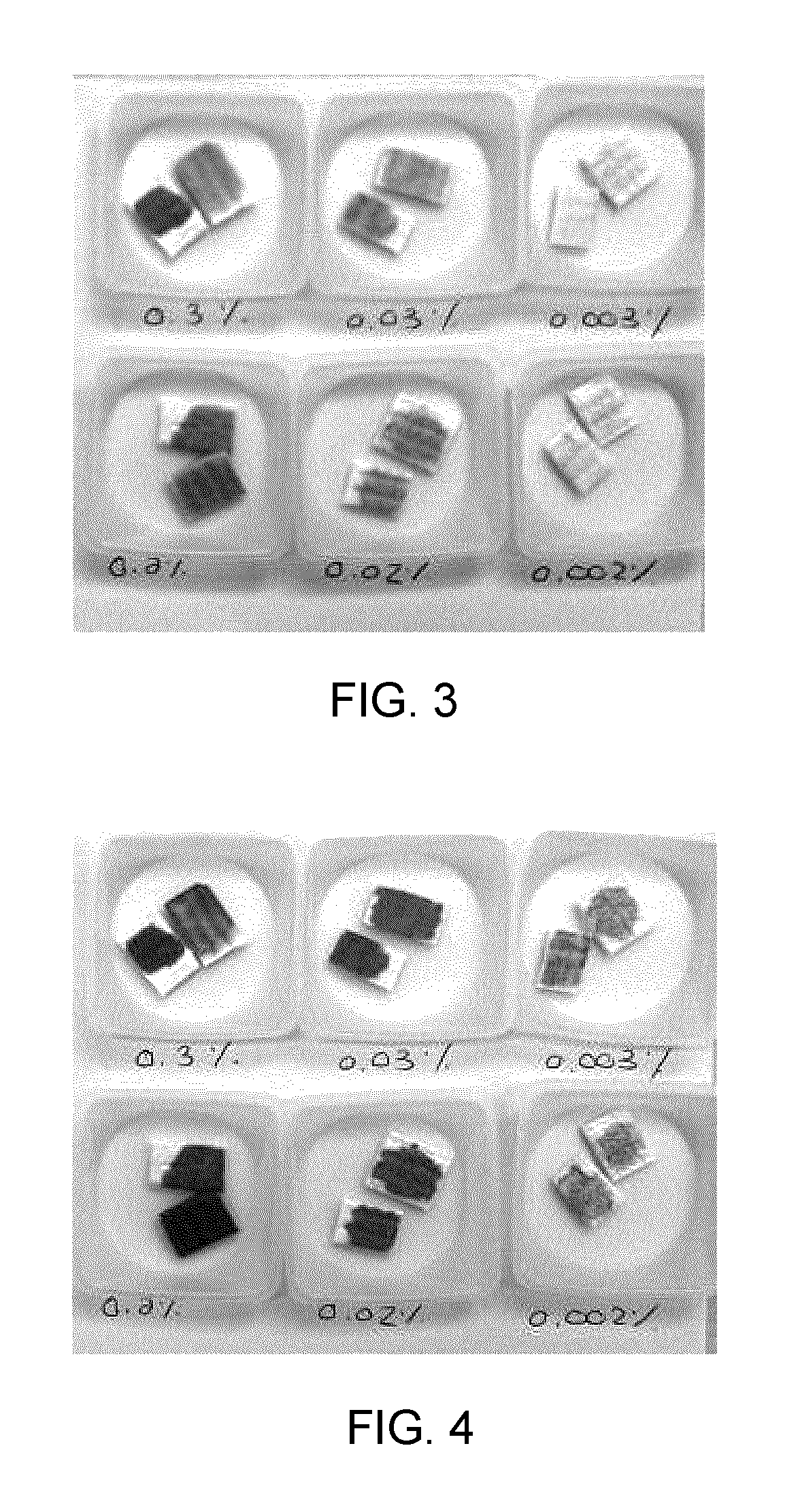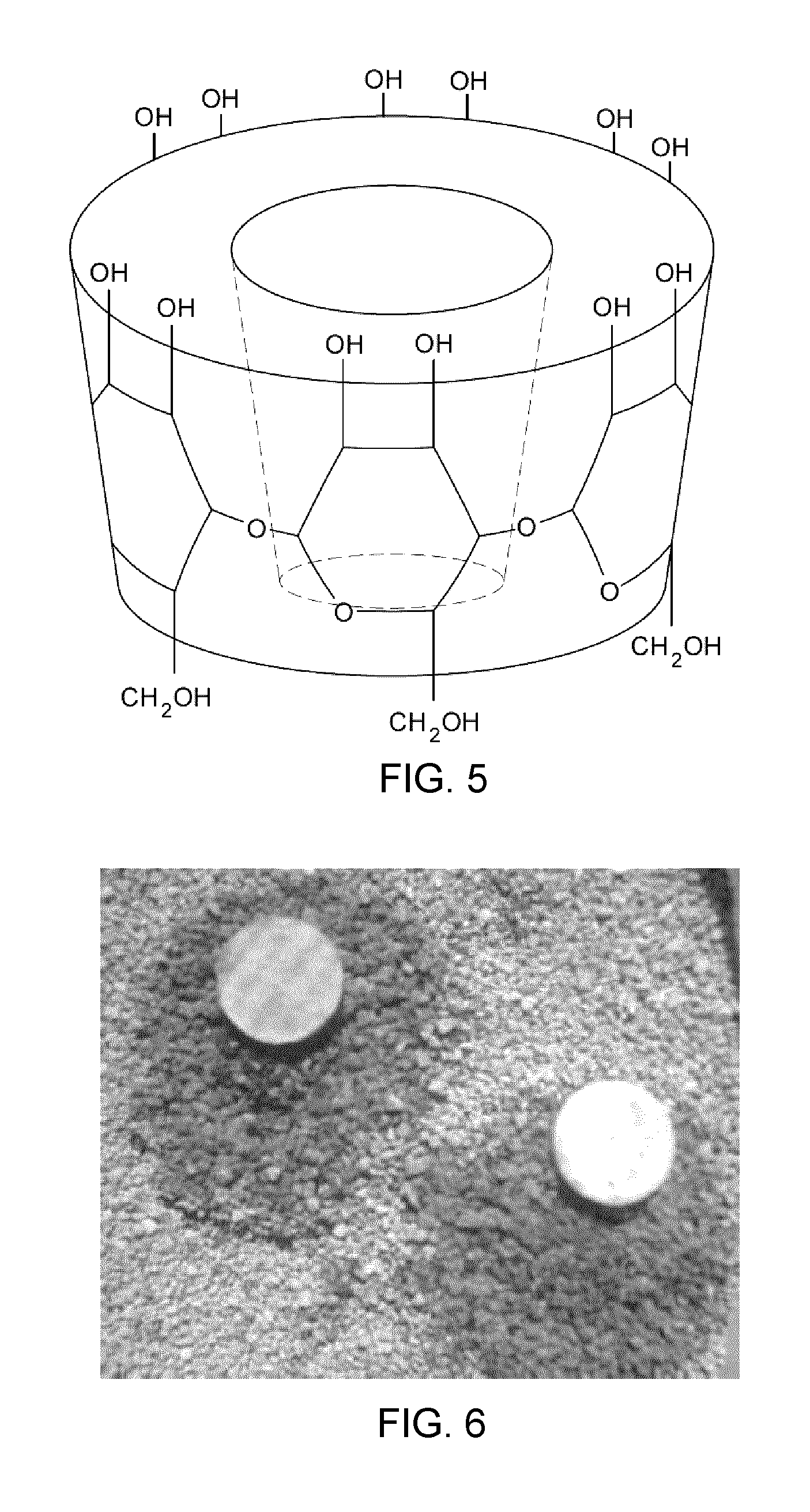Chromogenic absorbent material for animal litter and related chromogenic solution
a technology of absorbent material and animal litter, which is applied in the field of animal litter including chromogenic absorbent material, can solve the problems of lack of sophistication to diagnose animal diseases, ailments and conditions, and being susceptible to various diseases,
- Summary
- Abstract
- Description
- Claims
- Application Information
AI Technical Summary
Benefits of technology
Problems solved by technology
Method used
Image
Examples
example 1
[0137]Experiments have been performed by soaking paper solid matrix with 100 to 500 g of chromogenic solution per kilogram of paper. The chromogenic solution used for this purpose is detailed in Table 2:
[0138]
TABLE 2MassicMolarConcen-concen-MasstrationRatio / tration%Compound(g / mol)(mMol)TMB(×)(g / L)m / mWater (solvent)1000.0074.272HPβCD (host compound)1541.00200.007.5×308.2022.89TMB (chromogenic240.3426.676.410.48indicator)Sodium citrate294.1056.9216.741.24Citric acid (buffering agent)192.1240.007.680.57EDTA (stabilizer)372.244.00 0.15×1.490.11Cumene hydroperoxide152.1913.330.5×2.030.15(oxidizing agent)Lepidine (color enhancer)143.1926.671× 3.820.28
[0139]FIG. 6 shows two particles of paper chromogenic absorbent material prepared with the above described chromogenic solution. The left particle has been contacted with urine including blood. Upon contact with blood, the chromogenic indicator included in the particle is oxidized and a blue coloration appears after 2 to 15 minutes. The fina...
example 2
[0140]Experiments have been performed by soaking extruded wheat starch pellets with an amount of aqueous solution having a 0.0215% concentration in blood, or with the same amount of synthetic urine. The wheat starch pellets were prepared by extruding wheat starch and injecting 0.28 kg of the chromogenic solution by kg of wheat starch at the beginning of the extrusion process.
[0141]FIG. 7 illustrates that the pellets contacted with the blood solution (columns 1 and 3) and the synthetic urine (column 2 and 4) after 48 hours. The pellets contacted with the blood solution (columns 1 and 3) have a distinctive blue coloration whereas the pellets contacted with synthetic urine (columns 2 and 4) do not show any blue coloration.
example 3
[0142]Experiments have been also been performed to evaluate the influence of the mass ratio TMB / 2HPβCD on the blue coloration when substrate is contacted by blood solution. Four chromogenic solutions have been prepared with a ratio of 1 / 1 or 1 / 7.5 as indicated in Table 3. The molar concentrations and mass percentage of 2HPβCD and TMB in each of the four solutions are respectively given in Table 4 and Table 5. These chromogenic solutions were used to prepare chromogenic absorbent paper which was soaked with a 0.0215% blood solution.
[0143]
TABLE 3CHROMOGENIC SOLUTIONRATIO TMB / 2HPβCD11 / 7.521 / 1 31 / 7.541 / 1
[0144]
TABLE 4SodiumCitricCumeneComponentWater2HPβCDTMBcitrateacidhydroperoxideLepidineMolar mass18.011541.00240.34294.10192.12152.19143.19(g / mol)Concentration in—200.0026.6756.9240.0013.3326.67solution 1(mMol)Concentration in—26.6726.6756.9240.0013.3326.67solution 2(mMol)Concentration in—63.758.5056.9240.004.258.50solution 3(mMol)Concentration in—8.508.5056.9240.004.258.50solution 4(mMo...
PUM
| Property | Measurement | Unit |
|---|---|---|
| thickness | aaaaa | aaaaa |
| thickness | aaaaa | aaaaa |
| average diameter | aaaaa | aaaaa |
Abstract
Description
Claims
Application Information
 Login to View More
Login to View More - R&D
- Intellectual Property
- Life Sciences
- Materials
- Tech Scout
- Unparalleled Data Quality
- Higher Quality Content
- 60% Fewer Hallucinations
Browse by: Latest US Patents, China's latest patents, Technical Efficacy Thesaurus, Application Domain, Technology Topic, Popular Technical Reports.
© 2025 PatSnap. All rights reserved.Legal|Privacy policy|Modern Slavery Act Transparency Statement|Sitemap|About US| Contact US: help@patsnap.com



